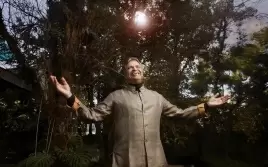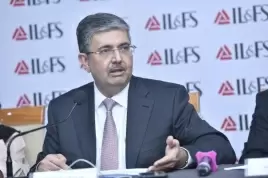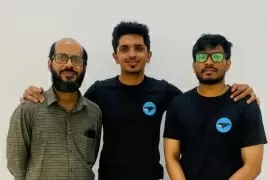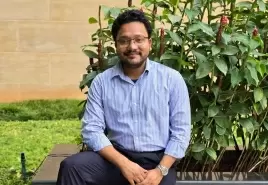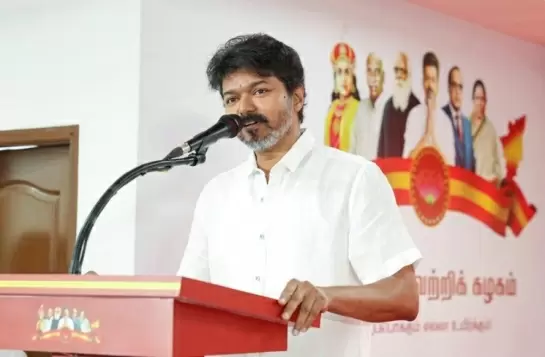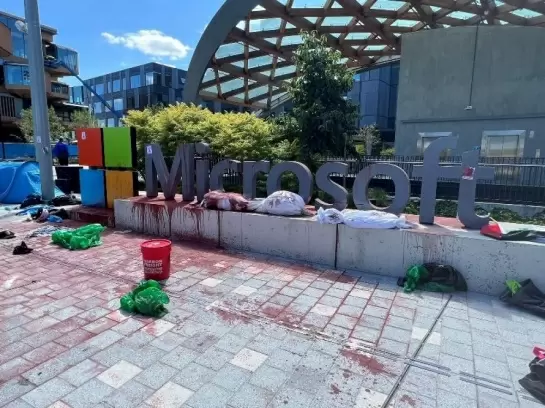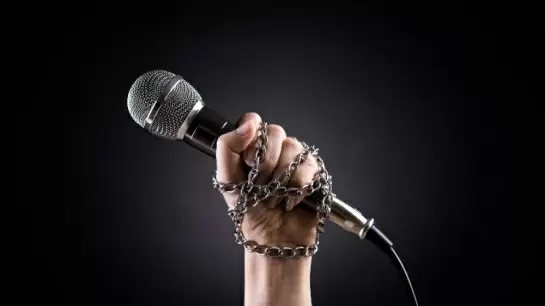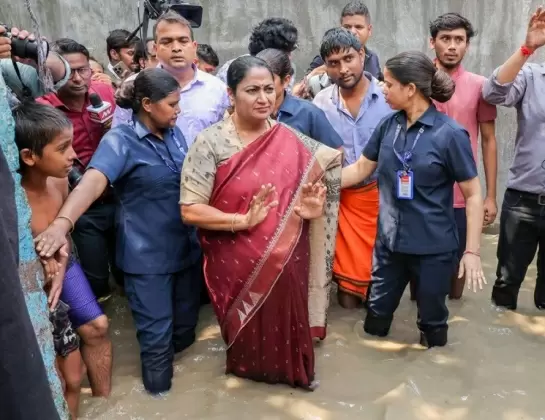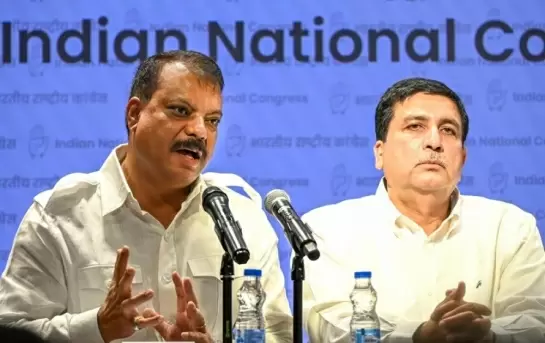‘Britain is also responsible for the ethnic conflict in Sri Lanka’
10-February-2012
Vol 3 | Issue 5
In the second and concluding part of his article on Sinhalese racism in Sri Lanka and the ethnic conflict it started, Brian Senewiratne blames the British for sowing the seeds of trouble in the island nation. The first part of the article was published on 8 Februar 2012.
Britain’s only concern vis-a-vis Sri Lanka has always been its own geopolitical, strategic and economic interests. On the eve of transfer of power, the British and Sri Lanka (Ceylonese) governments signed a “Defence and External Affairs” agreement of serious importance.
In exchange for ‘Independence’, Britain would give military assistance to Sri Lanka, and would be permitted to station and have bases for its Army, Navy and Air Force in Trincomalee, Colombo and Katunayake.
.webp) |
|
Mahinda Rajapaksa is just a symptom of a deep-seated Sinhalese racism (Image Concept & Illustration: KravMaga Sreeram)
|
The situation is no different now except that the international players and their ruthlessness have increased markedly. I refer in particular, to China, which is making Sri Lanka into a Chinese colony by stealth.
In the dozen dvds I have recorded and distributed worldwide, I have said that there are two ’wars’ going in Sri Lanka. One between the Sri Lankan (Sinhala) government against the Tamil people to force them to accept Sri Lanka as a Sinhala-Buddhist nation.
The other, at a different level, is ‘competition and co-operation’ (for which a new word has to be coined – ‘co-petition’) between China, India and the USA for a foothold in Sri Lanka for the control of the Indian Ocean. China can be replaced by China, Korea and Japan. India, by India and Pakistan. USA, by USA, UK and Australia.
‘Independence’ for the Sinhalese
It is no exaggeration to say that on 4th February, 1948, ‘Independence’ was granted to the Sinhalese to do what they wanted to the Tamils. Britain could not care less, as long as the military bases were secure and the (British) tea estates remained under Sinhalese capitalist control, to supply tea at absurdly low prices to fill the British cup.
The very least that the departing British could have done was to leave a Federal set-up, or left it the way it existed for centuries before their disastrous 1833 Colebrooke-Cameron ‘Reforms’ that unified and centralised power in the Sinhala South.
However, as has been stressed, the British could not care less about what happened to the minorities under Sinhalese majority rule. They were only concerned about holding on to military bases and a guaranteed supply of (cheap) tea, plucked by slave labourers.
Just for the record, Britain which grows not a single bush of tea was the largest tea exporter in the world. Ceylon tea auctions, even after so-called ‘Independence’ were conducted in London! So much for ‘Independence’.
Action
As I have said, this is not the time to ‘express regret’ at what happened to the Tamils in 1948, but a time for positive action.
Tamils, and those of us, non-Tamils, who support the right of the Tamil people to live with equality, dignity, safety, and now to live at all, must draw up an action plan. One thing is certain – to negotiate with the Rajapaksa regime for an acceptable deal for the Tamils is impossible. Those who believe otherwise, are not living in the real world.
I will set out an ‘Action Plan’. This is not an attempt to reinvent the wheel but to set out what has been done (successfully) in handling other barbaric regimes, such as the one in Apartheid South Africa.
Whenever I use this analogy, it is pointed out that the situation in South Africa was different, in that a small minority of whites were oppressing a vast number of blacks. I stand by my comparison in the Sri Lankan setting. It is a tiny number of Sinhalese (the ruling Rakapaksa junta) that is oppressing the vast number of Sri Lankans, be they Tamil, Sinhalese or Muslims. So the comparison is perfectly valid.
1. Isolate the Sri Lankan regime until it delivers an acceptable solution. This is exactly what was done in South Africa.
2. Organise and conduct a total boycott of all goods and services in and out of Sri Lanka. This must be comprehensive, with no exceptions. Tourism, sport, investment, loans, and support in every area must all be targeted. I am not claiming that this will be easy, any more than it was in dealing with the much more powerful South Africa. In fact it is much simpler since we are dealing with a regime on the verge of bankruptcy which relies on regular bail-outs for survival.
3. Trade Unions across the world will have to be informed of the brutality that is being unleashed on the Tamil people, and to urge them not to load or off load goods to or from Sri Lanka.
4. Tourist companies must be approached and urged to take Sri Lanka off the tourist destinations, and told that there are other better, cheaper, and even safer, places to spend a holiday, than the blood drenched beaches of Sri Lanka. Every tourist dollar goes to supporting a brutal totalitarian regime that is guilty of horrendous atrocities and a gross violation of basic human rights.
5. Make it impossible for the members of this regime to visit countries without a massive protest. The British Tamils showed what can be achieved when President Rajapaksa tried to visit Oxford University in November 2010. Not only did the Oxford Union withdraw the invitation, but Rajapaksa and his goons had to flee the country before they were charged. Rajapaksa should only be able to visit China and Russia.
6. File legal action against the perpetrators of crimes against humanity and take them to the International Criminal Court. Can this be done? Yes it can be done. A ruling Head of State, the President of Sudan, has been tried and convicted.Already there are charges filed in the US and in Europe. More must follow. Some of these criminals are now Sri Lankan Ambassadors. They must be sent back as was so successfully done to the Sri Lankan Ambassador to Germany, Switzerland and the Vatican, Jagath Dias, in 2011.
7. To insist on a Referendum in the Tamil area to see what the Tamil people want. This was done in East Timor. There is no reason why it cannot be done in Sri Lanka.
8. Target the Sinhalese people (members of my community) in the South and point out the problems and hazards of living under a totalitarian regime. The guns that were turned on the Tamils, will now be turned on the Sinhalese. That is what Totalitarian regimes do. It is critical to realise that the Tamils in Sri Lanka can achieve nothing without the help of the Sinhalese. Will the Sinhalese act? Yes they will, not because of any love for the Tamils, but for their own survival. As the International Monetary Fund tightens the screws, it is the working people who always pay the price. This is already happening to the Sinhalese.
9. Amnesty International, Human Rights Watch, Asian Human Rights Commission, and International Crisis Group, must be supported. They are groups with the necessary ability and experience to take on brutal regimes. They have done it before, and have succeeded. Their unrestricted admission to all parts of Sri Lanka, not just the Tamil areas, must be a non-negotiable demand. Until that is done, the sanctions should go on.
10. The R2P (Responsibility to Protect) will have to be applied, since the people of Sri Lanka, the Tamils in the North and East in particular, are not being protected by a ruthless government. R2P allows for armed intervention, if necessary. Words must mean something, and if R2P is to have any meaning, it has to be applied.
A separate Tamil State
I recently launched I.T. Sampanthan’s book, Black July ’83: Indictment. In one of the contributions Professor Kopan Mahadeva wrote, “President Mahinda Rajapaksa alone holds the key to lasting peace”. I would have put it differently, “President Rajapaksa and his junta hold the key to Tamil Eelam, and have more than justified the absolute need for this”.
As a 10-year-old schoolboy, I had just studied the 1833 Colebrook-Cameron ‘Reforms’ introduced by the British for their administrative ease. I had no idea of the practical consequences of these, I doubt if my history teacher did either.
I was about to find out when my parents decided to visit Jaffna for the first time in 1942. We drove North past Vavuniya, heading for the Jaffna Peninsula.
I was devastated by what I saw - the gross underdevelopment and neglect of the area, in stark contrast to Colombo which I had just left. I told my parents, one of them the first cousin of S.W.R.D.Bandaranaike, “Until this area is separated from the Sinhala South, this area will never develop, nor will this area with some of the most hardworking people in the world, be able to contribute to the national income”.
Now some 70 years later, I am even more convinced that what that the 10-year -old Sinhalese boy said in 1942 was absolutely correct.
As an 80-year-old, I am convinced that until the two nations are separated and the damage done by the colonial British reversed, there will neither be peace nor prosperity in Sri Lanka.
Dr. Brian Senewiratne (MBBS Hons (Lond) MD (Lond), FRCP (Lond), FRACP) is a Sinhalese doctor currently based in Australia



